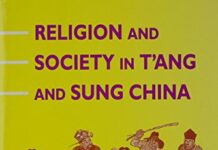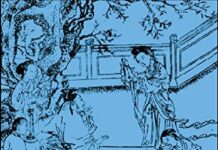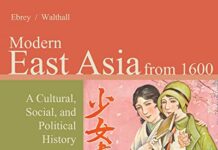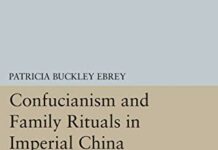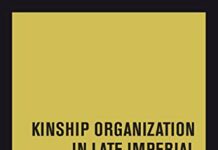
Ebook Info
- Published: 2014
- Number of pages: 708 pages
- Format: PDF
- File Size: 6.95 MB
- Authors: Patricia Buckley Ebrey
Description
China was the most advanced country in the world when Huizong ascended the throne in 1100 CE. Artistically gifted, he guided the Song Dynasty toward cultural greatness but is known to posterity as a political failure who lost the throne to Jurchen invaders and died their prisoner. In this comprehensive biography, Patricia Ebrey corrects the prevailing view of Huizong as decadent and negligent, recasting him as a ruler ambitious in pursuing glory for his flourishing realm.After a rocky start trying to overcome political animosities at court, Huizong turned his attention to the good he could do. He greatly expanded the court’s charitable ventures, founding schools, hospitals, orphanages, and paupers’ cemeteries. Surrounding himself with poets, painters, and musicians, he built palaces, temples, and gardens of unsurpassed splendor. Often overlooked, however, is the importance of Daoism in Huizong’s life. He treated spiritual masters with great deference, wrote scriptural commentaries, and urged his subjects to adopt his beliefs and practices. This devotion to the Daoist vision of sacred kingship eventually alienated the Confucian mainstream and compromised Huizong’s ability to govern. Ebrey’s lively biography adds new dimensions of understanding to a passionate, paradoxical ruler who, many centuries later, inspires both admiration and disapproval.
User’s Reviews
Reviews from Amazon users which were colected at the time this book was published on the website:
⭐I was hoping to get a book filled with his genious work in art, calligraphy and poetry but instead this is a book with texts mostly. very disappointed and i am unable to return this. not recommended if you want pictures.
⭐Amazingly comprehensive and insightful account of a ruler’s personality, his manifold activities and his difficult times.
⭐Having had a distant acquaintance with the Song-era emperor Huizong from the fictional Outlaws of the Marsh, I was most pleased to come across a lavish factual biography of the regent from the distinguished historian Pat Ebrey. Here is the life of an Emperor that engages us in the large public activities and seemingly personal moments a Chinese regent, one quite far from us in our normal sense of life, even as many of us may fancy ourselves, merely in our common half-secret loneliness, as such a solitary and powerful figure. In much of Chinese thinking, of course, Huizong is known for his patronage of the arts as well as for being rudely deposed by the northern Jurchen peoples and, as a historical character, acquiring a dim honor of being the last of his much-accomplishing dynasty. In traditional English history Huizong would be comparable to Richard II (“I have been studying how I may compare/This prison where I live unto the world . . .”) not only because he was deposed, or because he represented the last of his (Plantagenet) dynasty, but because he was often disdained for his liberal spending and his patronage of the arts–which, in Richard’s case, included the building of Westminster and the employment of one Geoffrey Chaucer. One may wonder if the conventional English thinking, even the conventional thinking of Shakespeare, was actually much like conventional Chinese thinking: enduringly patriarchal and tending to view excessive affection for “the arts” as a turn toward the feminine. The Ebrey volume is delightfully weighty with research, scholarship that has been skillfully cobbled into a coherent and moving 528-page narrative moving comfortably over several decades in the early 12th century. (Veritably, it is the literary equivalent of a Fan Kuan painting.) Primarily, the author manages to honor both the artistic and administrative sides of the man, without appearing swayed by either, or by skimping on details about how these different aspects may fit into the life of a ruling individual or an essentially ceremonial government. We also learn a great deal here about the development of charitable activities, educational outreach, early medical administration, the many mixtures of church and state, as well as being offered many glimpses of the highly developed Song world. (I myself was flabbergasted how much reading an emperor was called on to do amid his routine duties.) Ms. Ebrey, as befits a wise generalist, has adopted, a most comfortable way in nearly all chapters, of initially offering an ongoing narrative and then, at chapter’s end, coming out of the narrative arc to address a topic of some generality or theoretical interest. Much of the book is naturally is focused on “foreign policy” which, for the medieval Chinese means “the barbarians” from the north: here, the developing might respectively of the Liao and Jin political entities over several decades, which haunt and eventually surpass the Song regime. Ms. Ebrey is decidedly more sympathetic to Huizong as a commander-in-chief than in common websites such as “Cultural China” or the survey writings of Gernet and Foster. Of course, aside from the stated arguments–which are entertained at length in the book, one of reasons for this feeling of sympathy, even when portraying “the barbarian” likes of Aguda or Wuqimai, is that Ms. Ebrey so frequently furnishes all parties with credible dialogue that helps make the many diplomatic back-and-forths vivid in these ancient dramas. Perhaps one of the greatest enjoyments of this volume is its sensitivity to classical aesthetic interests: the poetic missives, often by several hands, that found their way to court, the pure and collective works of calligraphy that straddle the lines between command and confession, and, of course, the paintings themselves, in that earlier, largely artisanal age, when pictures did not clog the day, with that enduring passion for landscape, perhaps borne of a more serious pantheism, many centuries in advance of Lorrain, Ruysdael or Burke. (The book contains a number of lovely plates representing Huizong’s own efforts.) Ms. Ebrey has a balanced sensitivity to pictorial matters: she’s able to see both the formal and allegorical sides of painters such as Guo Xi, Li Tang as well as the majestic Fan Kuan.) I am also quite grateful that Ms. Ebrey has kept up her aesthetic–and religious–researches even through Huizong’s remote banishment at Five Forts in what is now the modern Heilongjiang province. Faced with a harsh captivity and a bitter penury for the last eight years of his once-pampered life, Huizong seems to have largely let go of his calligraphy–and painting–while maintaining his interest poetry writing–even if many of the poems came eventually to be burned. May an international reader here be tempted to think of royals in exile as a kind of testing ground for expressive primacy, and perhaps to cull through Huizong’s imperial peers, be they Puyi, Napolean, or even, much earlier, the ministerial Joesph? Perhaps in these harshest twilights, the virtues of speech, so essentially intersubjective, must sensibly take precedence over the somewhat more detached appeals of the pictorial. Ms. Ebrey has, in any case, offered a fine book in which to contemplate some rare frontiers of the human spirit.
⭐This book is a marvelously thorough biography of Emperor Huizong, superb painter, good poet, patron of Daoism, and presider over the loss of all North China to the small but determined Tungus dynasty of Jin. Every available detail on Huizong’s life is chronicled in a singularly fair, objective, open-minded way–quite an accomplishment, given the judgmental nature of Chinese records of the man, who was never forgiven for losing a good deal of China and letting himself get captured and held as a prisoner by the Jin. Huizong had to balance a highly polarized political situation, in which radicals (“reformers”) and conservatives (small-c, not what Americans now call “conservatives”) vied for dominance in sharp debates and cut-throat palace politics. This conflict often upstaged the far more important problem of resisting the Liao Khitans and the Jin Tungus.Dr. Ebrey’s beautifully clear and fair treatment makes it sadly clear that the traditional Chinese view of Huizong had much merit. He did indeed escape into art, music, and Daoist ritual, like a real-world Nero fiddling while Rome burned. He actually caused a rebellion by requisitioning so many beautiful rocks and fine flowers for the palace garden that the people of China were exhausted–admittedly this was not the only cause of the rebellion, but it was apparently a major one. This while the Jin were planning to sack the country. Huizong praised the great Daoist classics–Zhuangzi, Laozi, Liezi–while acting about as unlike their ideal monarch as anyone could possibly do; he seems to have had the same sort of mentality as modern right-wing Christians who uphold the Bible while violating all its moral precepts. A strange man indeed–feckless and pompous, but able to bear loss and captivity with some grace and dignity.Though long and detailed, this book is an essential read for Chinese history lovers.
⭐With this book the author gives a balanced account of emperor Huizong, the last factual emperor of the Northern Song dynasty.As he fatally lost half of his empire and his life to the barbarian Jin people, traditional Chinese historiography paints him as vain and and wasteful ( and so as derserving his fate). Furthermore, his strong Daoist tendencies did not much to improve his image with the Confucian establishment.Ebrey, however, shows Huizong as an exceptional artist and patron of fine arts, but also as an only average administrator of the Song empire, who made some seriously wrong choices at decisive moments. While the first three quarters of the book have a very strong (and sometimes a very detailed) emphasis on Huizong as a principal of major works of art and religious canon, the last quarter unsparingly describes the catasprophic downfall of Huizong’s court and the humilations and destruction of the former emperor and his familiy at the hands of the Jin.The ample notes are kept at the end of the book, which on one side makes the main text more readable, while on the other side a lot of information is lost if you do not always want to turn pages. The book also contains lots of tables and a few maps (of which there could have been more), and some interesting appendices.”Emperor Huizing” is really an outstanding work, as it is written very well and sometimes reads like a novel (although the tragic end is – of course – already known in advance), while still fully remaining an academic work.
⭐With this book the author gives a balanced account of emperor Huizong, the last factual emperor of the Northern Song dynasty.As he fatally lost half of his empire and his life to the barbarian Jin people, traditional Chinese historiography paints him as vain and and wasteful ( and so as derserving his fate). Furthermore, his strong Daoist tendencies did not much to improve his image with the Confucian establishment.Ebrey, however, shows Huizong as an exceptional artist and patron of fine arts, but also as an only average administrator of the Song empire, who made some seriously wrong choices at decisive moments. While the first three quarters of the book have a very strong (and sometimes a very detailed) emphasis on Huizong as a principal of major works of art and religious canon, the last quarter unsparingly describes the catasprophic downfall of Huizong’s court and the humilations and destruction of the former emperor and his familiy at the hands of the Jin.The ample notes are kept at the end of the book, which on one side makes the main text more readable, while on the other side a lot of Information is lost if you do not always want to turn pages. The book also contains lots of tables and a few maps (of which there could have been more), and some interesting appendices.”Emperor Huizing” is really an outstanding work, as it is written very well and sometimes reads like a novel (although the tragic end is – of course – already known in advance), while still fulfilling academic standards.
⭐The Emperor Huizong is certainly an interesting figure and I was certainly looking forward to reading this biography. Unfortunately, the thematic approach the author takes, particularly towards Huizong’s creative activity, means that information gets repeated – sometimes several tines – and the narrative flow is lost. This id written for other academics to admire rather than for anyone to enjoy reading, and after a while it grows tiring. There is much here to learn, but it could be prsented much more engagingly.
⭐La biographie de l’Empereur Huizong que publie en 2014 chez Harvard University Press l’historienne Patricia Ebrey est un livre exceptionnel à tous égards. Exceptionnel, il l’est d’abord parce qu’il s’agit d’un travail, au sens propre, sans précédent : il semble que personne n’avait jamais, en aucune langue, narré par le menu la vie de cet empereur de la dynastie des Song, qui a régné de 1100 à 1125, en puisant dans toutes les sources disponibles. Et Patricia Ebrey nous fait entrer dans les salles du palais impérial, à peine moins imposant que la Cité interdite des futurs Ming et Qing, et dans les rues de la capitale qu’était alors Kaifeng pour nous donner une idée de la civilisation matérielle étonnante de la Chine d’alors, de la vie quotidienne des empereurs Song et des tâches qui étaient les leurs, en un tableau qui s’avère être d’une extrême précision, malgré la distance temporelle (mais les sources semblent être particulièrement abondantes : on s’écrivait beaucoup sous les Song).Exceptionnelle, cette biographie l’est également parce que Huizong a toujours été vu à partir de l’échec final qui a été le sien, la décision malheureuse de rompre avec la sage politique d’apaisement suivie au nord de l’Empire, son abdication en faveur de son fils, sa capture par les Jurchen et ses dernières années vécues en exil comme prisonnier. La figure de Huizong a été en Chine intégrée à une vision didactique de l’histoire, il est devenu le prétexte à une morale susceptible d’être inculquée aux gouvernants: un empereur qui pense trop à ses plaisirs et se ruine en futilités conduit fatalement son pays à la défaite et au malheur. Le livre entend prendre ses distances avec cette présentation systématiquement négative.Patricia Ebrey, en effet, a été initialement attirée par Huizong en tant qu’il fut également un collectionneur d’artAccumulating Culture: The Collections of Emperor Huizong
⭐et aussi lui-même un artiste de valeur, entre autres choses calligraphe et peintre (les magnifiques illustrations en couleur du livre permettent de se familiariser avec son très grand talent, par exemple la peinture des « grues de bon augure »Gardner’s Art Through the Ages: A Global History: Non-western Art to 1300: Backpack Edition
⭐qu’on a pu admirer récemment à Londres). Un talent délicat, qu’il peigne les oiseaux et les fleurs, ou des conversations entre lettrés. Comment ont pu coexister, s’est-elle demandé, les diverses facettes de sa personnalité ?Patricia Ebrey a donc voulu raconter Huizong, sa profonde piété taoiste, son goût des femmes, sa vocation d’artiste, son souci de gouverner au mieux malgré sa réticence initiale à l’égard d’une fonction à laquelle rien ne le destinait (il devait son accession au trône au décès précoce de son frère, et à l’incapacité qui était celle d’un autre de ses frères à succéder au défunt, pour raison de santé : un empereur ne pouvait avoir de mauvais yeux, car son rôle au sommet de la pyramide bureaucratique imposait de lire quotidiennement de nombreux documents). Une vision profondément modifiée de son règne résulte de ce changement de perspective. Malgré ses erreurs, Huizong apparaît finalement plus comme un réformateur réfléchi, soucieux d’équilibre et d’harmonie, confronté à des choix difficiles, que comme l’homme léger et imprévoyant qu’ont décrit ses détracteurs.Derrière l’image convenue d’empereurs doté d’un pouvoir absolu se dessine en outre une réalité beaucoup plus complexe, celle d’une machinerie gouvernementale avec laquelle l’empereur devait compter. On découvre que la critique des politiques suivies était encouragée, même si elle pouvait s’avérer dangereuse. Derrière l’unanimité de façade, des factions et des visions alternatives des politiques à suivre coexistaient.La dernière partie, « Etre face à l’échec », se compose de chapitres intitulés « Faire avec les revers militaires », « Renoncer au trône », « Tout perdre », « Endurer la captivité » et elle est particulièrement poignante dans l’idée qu’elle donne de la dignité conservée du fils du Ciel déchu.« Emperor Huizong » illustre la tâche de l’historien d’une manière proprement exemplaire: rompre avec les jugements convenus et les illusions rétrospectives que la paresse d’esprit fait passer pour des évidences partagées, restituer à l’histoire sa part de contingence, permettre de porter sur les hommes et les événements un jugement équilibré.Derrière ce livre, quarante ans de recherches passionnées sur l’histoire chinoise, dont il est le couronnement provisoire.An insightful and unorthodox look at the life story of one of the most tragic emperors of the most prosperous Chinese dynasty. This book has a very objective point of view free from the dogmatic perspective that Huizong was a terrible ruler who single-handedly destroyed the country and dynasty.
⭐Très documenté ,bien écrit et divertissant .Bon complément à l’étude d’une période de la civilisation chinoise.Bel ouvrage relié à la typographie agréable,ne fatiguant pas la vue (640 pages)
⭐
Keywords
Free Download Emperor Huizong in PDF format
Emperor Huizong PDF Free Download
Download Emperor Huizong 2014 PDF Free
Emperor Huizong 2014 PDF Free Download
Download Emperor Huizong PDF
Free Download Ebook Emperor Huizong
